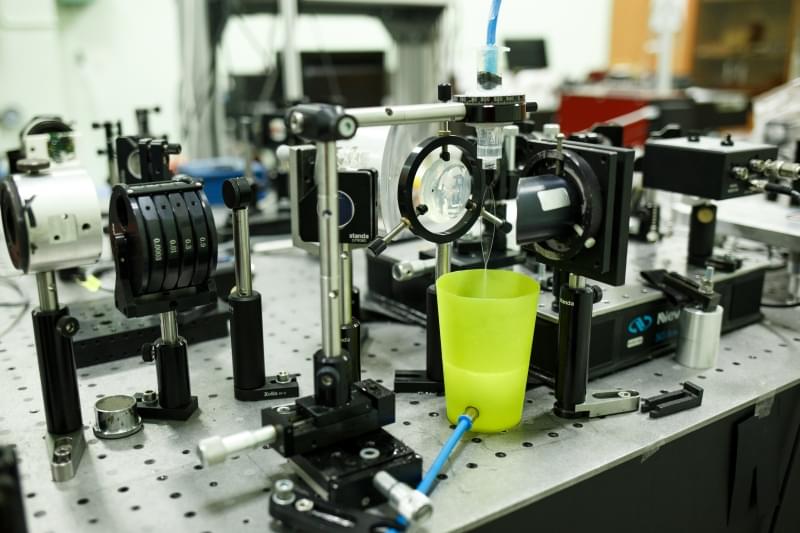Research shows 20% boost in seawater desalination efficiency and reducing energy demand – a leap towards eco-friendly water solutions.


Advanced proposition
The iCub3 robot avatar system has been designed to facilitate the embodiment of humanoid robots by human operators, encompassing aspects such as locomotion, manipulation, voice, and facial expressions with comprehensive sensory feedback, including visual, auditory, haptic, weight, and touch modalities.
The iCub3 avatar system consists primarily of the iCub3 humanoid robot, an evolved version of the IIT’s humanoid robot born two decades ago, and innovative wearable technologies named iFeel.

The past few decades have seen astonishing advances in imaging technology, from high-speed optical sensors that process over two million frames per second to tiny lensless cameras that record images using a single pixel.
In a study published in Advanced Materials, researchers from SANKEN (The Institute of Scientific and Industrial Research), at Osaka University have developed an optical sensor on an ultrathin, flexible sheet that can be bent without breaking. In fact, this sensor is so flexible, it will work even after it has been crumpled into a ball.
In a camera, the optical sensor is the device that senses the light that has passed through a lens, similar to the retina inside a human eye.

Tissue engineering, which involves the use of grafts or scaffolds to aid cell regeneration, is emerging as a key medical practice for treating volumetric muscle loss (VML), a condition where a significant amount of muscle tissue is lost beyond the body’s natural regenerative capacity. To improve surgical outcomes, traditional muscle grafts are giving way to artificial scaffold materials, with MXene nanoparticles (NPs) standing out as a promising option.
MXene NPs are 2D materials primarily composed of transition-metal carbides and nitride. They are highly electrically conductive, can accommodate a wide range of functional groups, and have stacked structures that promote cell interactions and muscle growth. While there have been practical demonstrations in the laboratory showcasing their ability to promote the reconstruction of skeletal muscles, the specific mechanism by which they do so remains unclear.
To address this gap, Associate Professor Yun Hak Kim from the Department of Anatomy and Department of Biomedical Informatics, alongside Professors Suck Won Hong, and Dong-Wook Han from the Department of Cogno-Mechatronics Engineering at Pusan National University developed nanofibrous matrices containing MXene NPs as scaffolds. They used DNA sequencing to reveal the genes and biological pathways activated by MXene NPs to aid in muscle regeneration.

A team of researchers from the Institute for Optoelectronic Systems and Microtechnology at Universidad Politécnica de Madrid (UPM) has designed a biosensor capable of identifying proteins and peptides in quantities as low as a single monolayer. For that, a surface acoustic wave (SAW), a kind of electrically controlled nano earthquake on a chip, is generated with an integrated transducer to act on a stack of 2D materials coated with the biomolecules to be detected.
As they report in the journal Biosensors and Bioelectronics in an article titled “Surface–acoustic-wave-driven graphene plasmonic sensor for fingerprinting ultrathin biolayers down to the monolayer limit,” the SAW would ripple the surface of a graphene-based stack in such a way that it confines mid–infrared light to very small volumes, enhancing light-matter interactions at the nanoscale.
In particular, quasiparticles that are part light (photons) and part matter (electrons and lattice vibrations), called surface plasmon-phonon polaritons, are formed at the rippled stack interplaying strongly with the molecules atop.

Polar liquids, such as water, are powerful absorbents of electromagnetic waves in the terahertz range. For that reason, they were never considered as potential THz radiation sources. Last year, researchers from ITMO University and the University of Rochester proved that liquid-based radiation sources can be no less effective than traditional ones. In their new study, the staff of ITMO University’s Laboratory of Femtosecond Optics and Femtotechnologies present their research on the generation of THz radiation in liquid jets of various kinds. In the future, these findings can be used to create new alternative sources of THz radiation. The research was published in Optics Express.
Terahertz technologies: spectroscopy, security, biomedicine, and non-destructive diagnostics
Terahertz radiation is a type of electromagnetic radiation located within the frequency spectrum between infrared and radio. It passes well through a variety of materials, such as wood, plastic, and ceramics.


College students may soon be able to attend lectures given by long-dead pioneers like Albert Einstein and Coco Chanel thanks to groundbreaking hologram technology, according to a report.
Some universities have already begun using the holographic technology to bring some of the world’s greatest innovators and artists, like Michael Jackson, to the classroom, The Guardian reported.
The technology can also beam in 3D images of speakers from across the world.

